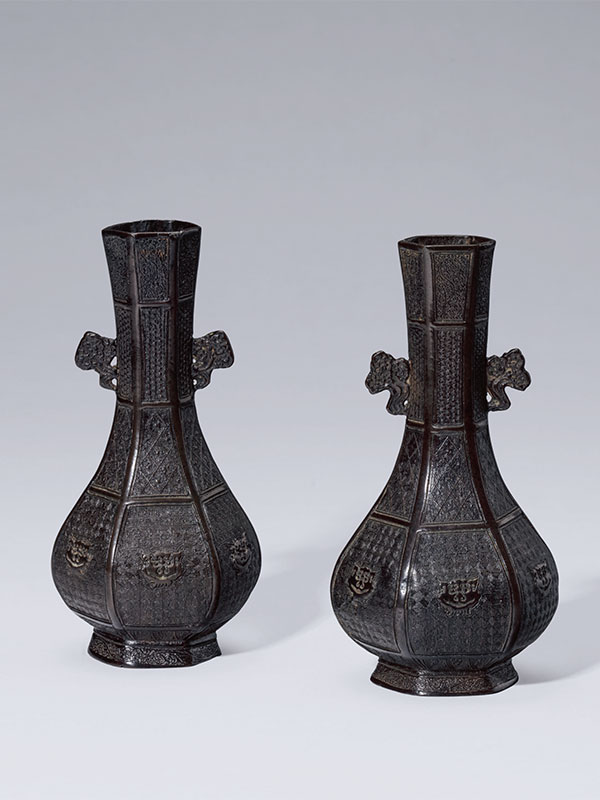Pair of bronze hexagonal vases
China, Yuan dynasty, 1279-1368
A pair of bronze hexagonal vases, each standing on a splayed foot rising to a pear-shaped body and waisted neck with flared rim.The exteriors are finely cast with five borders further divided into six panels, each enclosing dense archaistic motifs. The necks are flanked by a pair of handles in the form of ruyi-shaped cloud swirls. Scrolling designs adorn the foot rims. Each vase has been patinated to a rich, dark brown surface.
The ‘Later Bronzes’ are among the most refined expressions of Song antiquarianism. Referencing the ritual vessels of the Great Bronze Age, these later bronzes became objects of literati display of cultural refinement. Although their shapes often derived from Shang, Zhou, and Han ritual bronzes, their functions changed as they were often used as incense burners, objects for the scholar’s desk, and flower vases. Decoration evolved as well, suiting the literati taste. The present pair, possibly used as flower vases, may be inspired from the ancient hu vessel, but the innovation of the time is evident in terms of decoration and hexagonal form.[1] A highly similar vase is in the collection of the Phoenix Art Museum.[2]
- Mowry, R. D., China’s Renaissance in Bronze: The Robert H. Clague Collection of Later Chinese Bronzes 1100-1900, Phoenix Art Museum, Phoenix 1993, pp 9-11, 31
- Mowry, R. D., op. cit. pl. 4, p. 31

